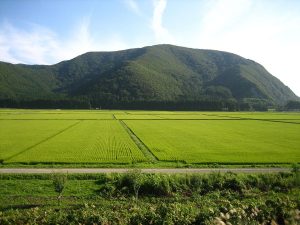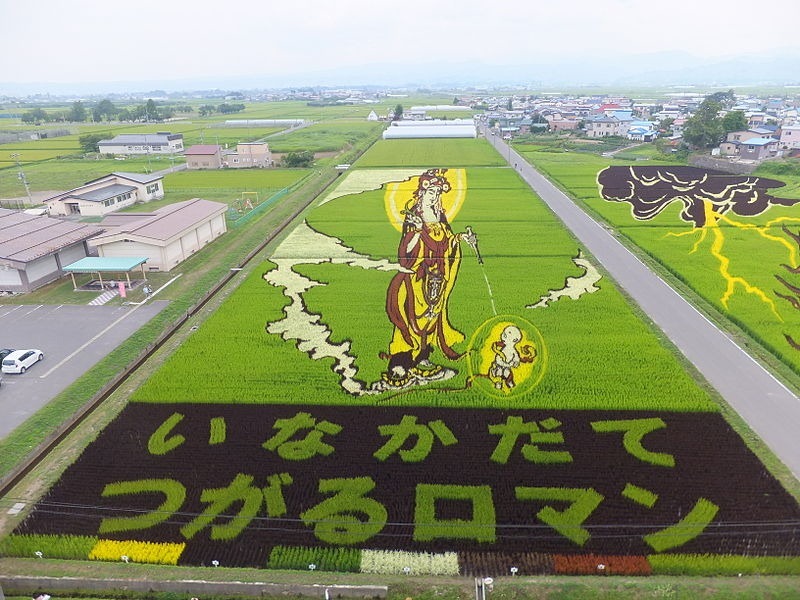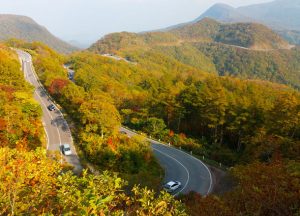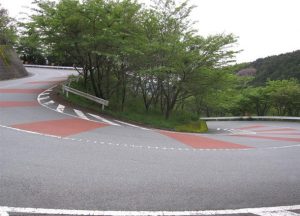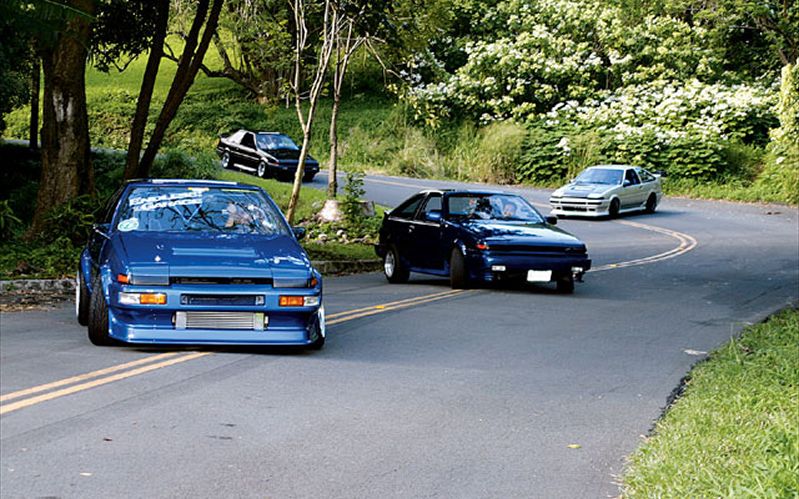Being an enormous food junkie and a huge fan of Japan, naturally, I will conclude my Japan blog post series by researching the geography of food.
When searching the various culinary dishes Japan has to offer, many maps appear, organizing dishes by prefecture. As we’ve learned during the agricultural portion of the course, rice is the main staple food in Japan, and has since evolved into many signature Japanese dishes, including sushi, katsu-don, and every other type of don (rice bowl).
This cumulative list of foods unique to their prefectures has been generously created for other food junkies to study when they go to Japan.

Hokkaido
Jingisukan (Grilled mutton) – A lamb dish said to be the meat of choice for Genghis Khan, as the dish was named after him, and the skillet is shaped like helmets which the military was said to cook their food on.
Ishikari Nabe (Salmon and vegetable stew with miso and butter) – A stew with a miso base and Hokkaido salmon. Due to the cold winter months, this stew is fantastic to warm to soul.
Aomori
Ooma Maguro Tuna Dishes – Ooma lies on the east coast of the island and is known for their tuna.
Iwate
Morioka Reimen (Cold Korean Ramen) – Similar to the North Korean dish Naengyeon. Has a spicy cold beef broth and often includes fruit to help cut the spicy, as Koreans are known for adding chilli to many of their dishes.
Morioka Jajamen (Thick Chinese noodles with meat-miso sauce) – A Chinese inspired noodle dish topped with cucumber, green onion, ginger, a meat-miso sauce and more. This is unsurprising that dish like this is known in this prefecture as the population of Iwate is 40% Chinese immigrants.
Miyagi
Zundamochi (Soy bean mochi / rice cake) – Utilizing the cultivated rice in Japan and soy bean paste, the mochi dessert emerged and is apparently the best in Miyagi!
Kaki Ryori (Oyster Dishes) – Oyster dishes are well known for in Miyagi Prefecture, likely due to it’s coastal geography.
Akita
Hata Hata Zushi – Known as the “God Fish” with a sticky and scale-less texture. This fish is mainly found in this prefecture which could be a cause of its fame.
Yamgata
3. Dongara Jiru (Dongara Soup) – This soup contains gray cod cut into large chunks and includes the bones, head and innards. This bone soup is another great way to warm up in the Northern territory of Japan.
Toyama
Shiro Ebi Ryori (White Shrimp Dishes) – Toyama is also known for its white shrimp dishes. So, if you’re in Toyama, look out for things that have white shrimp in them.
Fukui
Oroshi Soba – A cold soba dish with various toppings. It is a great meal to cool down in the hot summers of Fukui.
Chiba
Namerou – A fisherman’s dish of horse mackerel, sardines, flying fish, and Pacific Saury. It being another coastal prefecture, fish is perfected and combined to create the ultimate seafood cuisine.
Yude Rakkasei (Steamed Peanuts) – Chiba’s subtropical climate makes it a good area for cultivating peanuts, so Chiba and Fuji City have become well known for these peanuts.
Kanagawa
Kaigun Kare (Navy Curry) – A historical navy background of this prefecture was said to have created this signature curry dish which is welcomed in all of Japan today. This local curry was birthed out of teh Kanagawa region due to it’s history of feeding the navy base with warm and simple curry.
Kyoto
Kyou Tsukemono (Kyoto Pickles) – Pickles made in Kyoto, known for their simplicity and varieties.
As deducted from some of the summarized descriptions of these unique dishes, a majority of the reason dishes become popularized and specific to each prefecture is largely in part by the geographical locations of these areas. Prefectures on the coastline, such as Aomori, Chiba, and Akita all have a specified signature seafood dish, showing that the Japanese are resourceful of their location and master cooking available food sources to perfection. Other areas in the North such as Hokkaido and Yamagata specialize in stews and soups that will undoubtable provide warmth and comfort in the cold winter months. It has been extremely fascinating to recognize how Japan’s food is so closely connected to its prefectures, and for such a small island, the diversity of cuisine is exceptional. I am just thankful that they have shared these dishes with North American’s and I can enjoy a good bowl of ramen or katsu-don in Vancouver!

